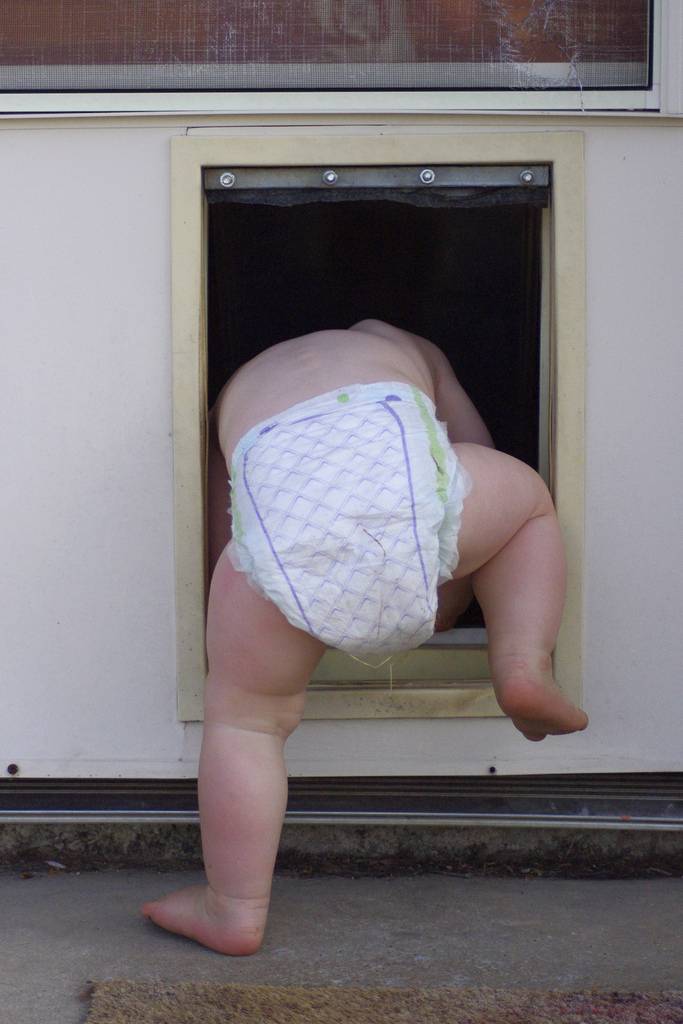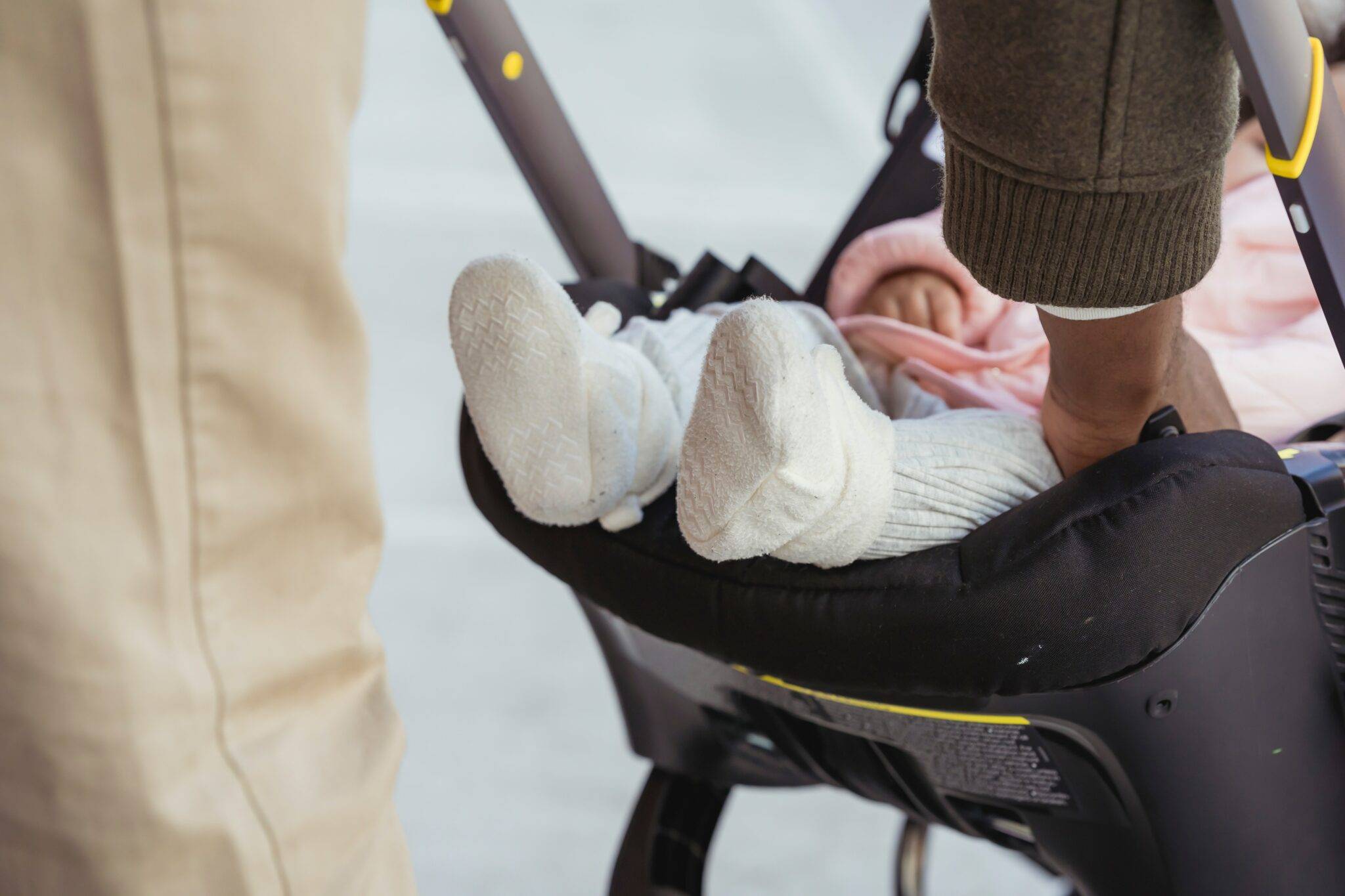Welcoming a new baby into the family is an exciting and transformative experience. As a new mom, you want to have all the essential tools and products to make the journey as smooth and enjoyable as possible. And one of the most indispensable items for any new mom is a baby carrier.
This comprehensive guide will explore why a baby carrier is a must-have, its benefits, and how to choose the perfect one for you and your baby.
Why Every New Mom Needs a Baby Carrier
- Convenience and Freedom: Carrying your baby hands-free allows you to perform daily tasks and errands while keeping your baby close. Whether you’re grocery shopping, doing household chores, or simply enjoying a walk, a baby carrier provides the freedom to move about easily.
- Promotes Bonding: Using a baby carrier fosters a close bond between mother and baby. The physical closeness and skin-to-skin contact enhance emotional connections and provide a sense of security for your little one. This bonding time is crucial for your baby’s development and helps soothe and calm them.
- Supports Breastfeeding: A baby carrier makes breastfeeding much more manageable. Many carriers are designed to allow discreet breastfeeding, making it easier for you to feed your baby whenever and wherever they need it. This flexibility is especially beneficial among newborns since they need frequent feedings.
- Reduces Postpartum Depression: Physical closeness with your baby helps reduce the risk of postpartum depression. The release of oxytocin, often called the “love hormone,” during skin-to-skin contact helps new moms feel more connected and less stressed.
Benefits of Using a Baby Carrier
- Enhanced Mobility: A baby carrier allows you to navigate crowded spaces, public transportation, and uneven terrain comfortably. You can go about your day without the hassle of maneuvering a bulky stroller.
- Hands-Free Parenting: You can keep your hands free to attend to other tasks or engage in activities that require both hands. This hands-free feature makes multitasking more manageable and allows you to maintain your productivity.
- Emotional and Cognitive Development: The close physical contact in a baby carrier supports your baby’s emotional and cognitive development. Being at eye level allows your baby to observe and interact with the world around them, stimulating their senses and promoting learning.
- Reduces Infant Crying: Studies have shown that babies in a baby carrier tend to cry less than those who aren’t. The close physical contact and soothing motion help babies feel secure and content, reducing their need to cry for attention or comfort.
- Comfort for Baby: Babies feel comforted and secure when close to their parents. The gentle rocking motion of walking while wearing a baby carrier helps soothe a fussy baby and promotes better sleep. The upright position in many carriers aids digestion and reduces the risk of colic.
- Encourages Physical Activity: For new moms looking to get back into shape after childbirth, a baby carrier is a great way to incorporate physical activity into your daily routine. Walking with your baby in a carrier is a gentle form of exercise that helps improve your fitness and well-being.
- Supports Sibling Bonding: Older children feel included in activities and outings, reducing feelings of jealousy or competition. This shared experience fosters a positive relationship between siblings from an early age.
How to Choose the Right Baby Carrier
- Consider Your Lifestyle: Consider your daily activities. If you use the carrier for long periods or while performing physical tasks, opt for one with good back support and padded straps. For shorter trips, a lightweight and easy-to-use carrier like a ring sling is suitable.
- Baby’s Age and Size: Carriers are designed for different stages of your baby’s development. Newborns require ample head and neck support, while older babies need carriers for their growing size and weight. Ensure that the carrier is appropriate for your baby’s age and size.
- Comfort and Fit: Comfort is key when it comes to baby carriers. Look for carriers with adjustable features that allow you to customize the fit to your body. Proper weight distribution is important to prevent strain on your back and shoulders. Also, consider the material; breathable fabrics are ideal for hot weather, while thicker fabrics provide warmth in colder climates.
- Safety Features: Safety is a top priority. Check for carriers that meet safety standards and have secure fastenings and sturdy construction. Ensure proper support for your baby’s hips and spine to promote healthy development.
Types of Baby Carriers
Soft-Structured Carriers (SSCs)
These are among the most popular choices. These carriers typically have padded shoulder straps and waistbands, providing excellent support for the baby and the wearer. SSCs are easy to use and can be adjusted to fit different body types.
- Padded shoulder straps and waistbands for added comfort
- Adjustable to fit different body types
- Multiple carrying positions (front, back, hip)
- Often includes a hood for sun protection and privacy during breastfeeding
Wrap Carriers
These long pieces of fabric wrap around your body to create a snug and secure hold for your baby. These carriers are incredibly versatile since they can be tied in various ways for many carrying positions. Wrap carriers are great for newborns and provide excellent comfort and support.
- A long piece of fabric that can be tied in different ways
- Suitable for newborns and older babies
- Fits snugly and securely
- Allows for multiple carrying positions
Ring Slings
These consist of a long piece of fabric with two rings at one end. The fabric is threaded through the rings to create a pouch for your baby. Ring slings are easy to adjust and can be used for newborns and older babies. They’re best for quick trips and are easy to pack in a diaper bag.
- A long piece of fabric with two rings
- Easy to adjust for a custom fit
- Suitable for newborns and older babies
- Compact and portable
Mei Tai Carriers
These types combine the features of wraps and SSCs. They have a square or rectangular panel with long straps tied around your waist and shoulders. Mei Tai carriers offer excellent support and are suitable for babies of various ages.
- Square or rectangular panel with long straps
- Combines features of wraps and SSCs
- Suitable for babies of various ages
- Provides excellent support
Tips for Using a Baby Carrier Safely
- Ensure Proper Positioning: This is crucial for your baby’s safety and comfort. Always follow the manufacturer’s instructions for using the carrier and make sure your baby is seated in an ergonomic position. The “M” shape position, with knees higher than the bottom, is ideal for healthy hip development.
- Check for Tightness: Ensure the carrier is snug enough to keep your baby secure but not too tight to restrict their breathing. You should be able to fit two fingers between your baby’s chest and your body.
- Follow Age and Weight Guidelines: Always follow the manufacturer’s age and weight guidelines. Use a carrier suited for your baby’s size or age for their safety and comfort. Transition to a different carrier as your baby grows and their needs change.
- Monitor Baby’s Temperature: Keep an eye on your baby’s temperature, especially in hot weather. Dress your baby appropriately and ensure they aren’t overheating. On colder days, dress your baby in layers to keep them warm and comfortable.
- Practice Before Use: Before using the carrier with your baby, practice putting it on and adjusting it to ensure a proper fit. Use a doll or stuffed animal to simulate the weight and position of your baby. This practice makes you feel confident and comfortable using the carrier with your baby.
- Regularly Inspect the Carrier: Regularly check the carrier for signs of wear and tear. Look for loose seams, broken buckles, or any other damage that could compromise safety. Replace the carrier if you notice any issues.
How to Clean and Maintain Your Baby Carrier
This is essential for your baby’s health and safety. Most baby carriers come with specific washing instructions, but here are some general tips:
- Spot Cleaning: For minor spills and stains, spot-clean your carrier with a damp cloth and mild detergent.
- Machine Washing: Use a gentle cycle with cold water and a mild detergent. Avoid using fabric softeners or bleach, as they can damage the fabric.
- Air Drying: The carrier can be air dried to prevent shrinkage and maintain its shape. Avoid using a dryer, especially in high-heat settings.
- Regular Inspections: Regularly check for signs of wear and tear, such as frayed straps or loose stitching. Address any issues immediately to ensure the safety and longevity of your carrier.
How to Transition from Carrier to Stroller
As your baby grows, you find a stroller becomes more practical for longer outings. Here’s how to transition smoothly from using a carrier to a stroller:
- Introduce the Stroller Gradually: Start with short walks to help your baby get used to the stroller. Gradually increase the duration as your baby becomes more comfortable.
- Make It Comfortable: Ensure the stroller seat is well-padded and adjustable. Use a stroller blanket or cushion to make it cozy.
- Bring Familiar Items: Bring your baby’s favorite toys or a blanket that smells like home to make the stroller feel familiar and comforting.
- Use the Stroller for Naps: Encourage your baby to nap in the stroller during walks. The gentle motion is soothing for sleep, making the transition easier.
Top Baby Carriers on the Market
Ergobaby Omni 360: The Ergobaby Omni 360 is a versatile and highly-rated carrier that offers multiple carrying positions, including front-inward, front-outward, hip, and back carry. It provides excellent support for the baby and parent and is suitable for newborns to toddlers.
BabyBjörn Baby Carrier One: The BabyBjörn Baby Carrier One is a popular choice, known for its ergonomic design and ease of use. It offers four carrying positions with a built-in insert for newborns. It’s made with soft, breathable fabric, ensuring comfort for the baby and parent.

Boba Wrap: The Boba Wrap is a stretchy wrap carrier, perfect for newborns and infants. It provides a snug and secure fit, allowing
for comfortable carrying and easy breastfeeding. The wrap is made from a soft, machine-washable fabric that is gentle on your baby’s skin.
Moby Wrap: The Moby Wrap is a classic wrap carrier with excellent support and versatility. It’s tied in various ways to
allow different carrying positions, providing a comfortable fit for the baby and parent. The Moby Wrap is suitable for newborns to toddlers.
Tula Free-to-Grow Baby Carrier: The Tula Free-to-Grow Baby Carrier is designed to grow with your baby from infancy to toddlerhood. It offers adjustable settings to ensure a perfect fit at every stage of the baby’s development. It’s known for its stylish designs and high-quality materials.
Lillebaby Complete All Seasons Carrier: The Lillebaby Complete All Seasons Carrier is designed for year-round use, with a temperature control panel that can be zipped up for warmth or down for ventilation. It offers six carrying positions and provides excellent lumbar support for the wearer.
Choose a Baby Carrier that Meets Your and Your Baby’s Needs
A baby carrier is undoubtedly a must-have item for new moms. With its amazing benefits for the baby and parent, choosing the right one significantly enhances your parenting experience. With so many options in the market, there’s a perfect carrier for every mom and baby.
For more parenting tips and information, check out our blog posts on baby care essentials and newborn care. These resources provide valuable insights to help you navigate the joys and challenges of parenthood. For further reading, you might be interested in 6 Tips for Efficiently Packing the Diaper Bag and Enjoy Baby’s Outing and Invest in a Bassinet for Baby’s Safe Sleep: 6 Reasons Why




